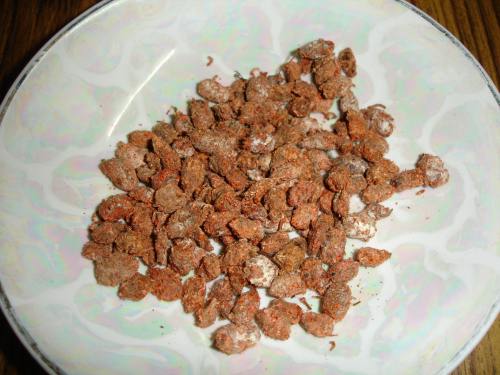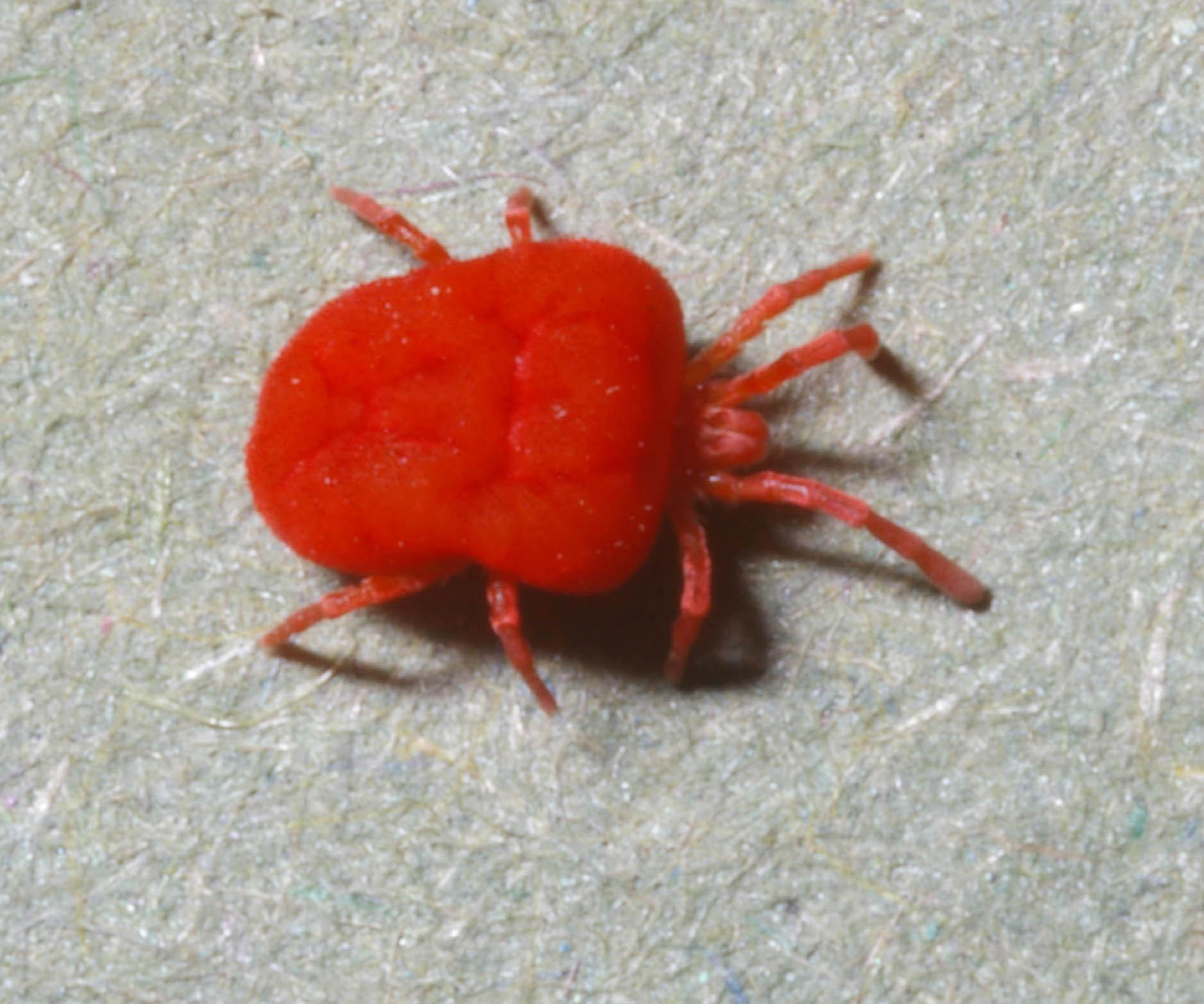|
Trombidium Rowmundi
''Trombidium rowmundi'' is a species of mite in the genus ''Trombidium'' in the family Trombidiidae. It is found in Poland. The larvae of this species use spiders as a host A host is a person responsible for guests at an event or for providing hospitality during it. Host may also refer to: Places * Host, Pennsylvania, a village in Berks County * Host Island, in the Wilhelm Archipelago, Antarctica People * .... References * Synopsis of the described Arachnida of the WorldTrombidiidae Further reading * (1996): Seven new larval species of mites (Acari, Prostigmata: Erythraeidae and Trombidiidae) from Poland. ''Wiad Parazytol.'' 42(4): 443-460. Trombidiidae Arachnids of Europe Animals described in 1996 {{Trombidiformes-stub ... [...More Info...] [...Related Items...] OR: [Wikipedia] [Google] [Baidu] |
Mite
Mites are small arachnids (eight-legged arthropods) of two large orders, the Acariformes and the Parasitiformes, which were historically grouped together in the subclass Acari. However, most recent genetic analyses do not recover the two as each other's closest relative within Arachnida, rendering the group invalid as a clade. Most mites are tiny, less than in length, and have a simple, unsegmented body plan. The small size of most species makes them easily overlooked; some species live in water, many live in soil as decomposers, others live on plants, sometimes creating galls, while others are Predation, predators or Parasitism, parasites. This last type includes the commercially destructive ''Varroa'' parasite of honey bees, as well as scabies mites of humans. Most species are harmless to humans, but a few are associated with allergies or may transmit diseases. The scientific discipline devoted to the study of mites is called acarology. Evolution and taxonomy Mites are not ... [...More Info...] [...Related Items...] OR: [Wikipedia] [Google] [Baidu] |
Trombidium
''Trombidium'' is a genus of mite with about 30 described species. Species * '' Trombidium auroraense'' Vercammen-Grandjean, Van Driesche & Gyrisco, 1977 – New York * '' Trombidium breei'' Southcott, 1986 – Europe (host: ''Agapetes galathea'', Lepidoptera) * '' Trombidium brevimanum'' (Berlese, 1910) – Europe * '' Trombidium cancelai'' (Robaux, 1967) – Spain * '' Trombidium carpaticum'' (Feider, 1950) – France, Romania * † '' Trombidium clavipes'' Koch & Berendt, 1854 – Fossil: Oligocene * '' Trombidium dacicum'' (Feider, 1950) – Poland, Romania * '' Trombidium daunium'' (Paoli, 1937) – Italy * '' Trombidium fturum'' Schweizer, 1951 – Spain, Switzerland * '' Trombidium fuornum'' Schweizer, 1951 – Poland, Switzerland, France * '' Trombidium geniculatum'' (Feider, 1955) – Spain, Romania, Poland, Norway * '' Trombidium grandissimum'' (Koch, 1867) - India * '' Trombidium heterotrichum'' (Berlese, 1910) – Europe * '' Trombidium holosericeum'' (Linnaeus, 17 ... [...More Info...] [...Related Items...] OR: [Wikipedia] [Google] [Baidu] |
Trombidiidae
Trombidiidae, also known as red velvet mites, true velvet mites, or rain bugs, are small arachnids (eight-legged arthropods) found in plant litter and are known for their bright red color. While adults are typically no more than in length, some species can grow larger and the largest, including the African ''Dinothrombium tinctorum'' and Indian ''Trombidium grandissimum'', may exceed . This also makes them the largest mites, if disregarding ticks engorged after feeding; unlike those, ''D. tinctorum'' and ''T. grandissimum'' are harmless to humans. Their life pattern is in stages similar to other members of the Prostigmata: egg, pre-larva, larva, protonymph, deutonymph, tritonymph and adult (male or female). They usually have only one breeding cycle per year.Zhang, Zhi-Qiang (1998) Biology and ecology of trombidiid mites (Acari: Trombidioidea) Experimental & Applied Acarology 22:139–15PDF/ref> They are active predators as grown adults. As larvae they are often parasites of ... [...More Info...] [...Related Items...] OR: [Wikipedia] [Google] [Baidu] |
Poland
Poland, officially the Republic of Poland, is a country in Central Europe. It extends from the Baltic Sea in the north to the Sudetes and Carpathian Mountains in the south, bordered by Lithuania and Russia to the northeast, Belarus and Ukraine to the east, Slovakia and the Czech Republic to the south, and Germany to the west. The territory has a varied landscape, diverse ecosystems, and a temperate climate. Poland is composed of Voivodeships of Poland, sixteen voivodeships and is the fifth most populous member state of the European Union (EU), with over 38 million people, and the List of European countries by area, fifth largest EU country by area, covering . The capital and List of cities and towns in Poland, largest city is Warsaw; other major cities include Kraków, Wrocław, Łódź, Poznań, and Gdańsk. Prehistory and protohistory of Poland, Prehistoric human activity on Polish soil dates to the Lower Paleolithic, with continuous settlement since the end of the Last Gla ... [...More Info...] [...Related Items...] OR: [Wikipedia] [Google] [Baidu] |
Larva
A larva (; : larvae ) is a distinct juvenile form many animals undergo before metamorphosis into their next life stage. Animals with indirect development such as insects, some arachnids, amphibians, or cnidarians typically have a larval phase of their life cycle. A larva's appearance is generally very different from the adult form (''e.g.'' caterpillars and butterflies) including different unique structures and organs that do not occur in the adult form. Their diet may also be considerably different. In the case of smaller primitive arachnids, the larval stage differs by having three instead of four pairs of legs. Larvae are frequently adapted to different environments than adults. For example, some larvae such as tadpoles live almost exclusively in aquatic environments but can live outside water as adult frogs. By living in a distinct environment, larvae may be given shelter from predators and reduce competition for resources with the adult population. Animals in the lar ... [...More Info...] [...Related Items...] OR: [Wikipedia] [Google] [Baidu] |
Spider
Spiders (order (biology), order Araneae) are air-breathing arthropods that have eight limbs, chelicerae with fangs generally able to inject venom, and spinnerets that extrude spider silk, silk. They are the largest order of arachnids and rank seventh in total species diversity among all Order (biology), orders of organisms. Spiders are found worldwide on every continent except Antarctica, and have become established in nearly every land habitat. , 53,034 spider species in 136 Family (biology), families have been recorded by Taxonomy (biology), taxonomists. However, there has been debate among scientists about how families should be classified, with over 20 different classifications proposed since 1900. Anatomy, Anatomically, spiders (as with all arachnids) differ from other arthropods in that the usual body segmentation (biology), segments are fused into two Tagma (biology), tagmata, the cephalothorax or prosoma, and the opisthosoma, or abdomen, and joined by a small, cylindr ... [...More Info...] [...Related Items...] OR: [Wikipedia] [Google] [Baidu] |
Parasitism
Parasitism is a close relationship between species, where one organism, the parasite, lives (at least some of the time) on or inside another organism, the host, causing it some harm, and is adapted structurally to this way of life. The entomologist E. O. Wilson characterised parasites' way of feeding as "predators that eat prey in units of less than one". Parasites include single-celled protozoans such as the agents of malaria, sleeping sickness, and amoebic dysentery; animals such as hookworms, lice, mosquitoes, and vampire bats; fungi such as honey fungus and the agents of ringworm; and plants such as mistletoe, dodder, and the broomrapes. There are six major parasitic strategies of exploitation of animal hosts, namely parasitic castration, directly transmitted parasitism (by contact), trophicallytransmitted parasitism (by being eaten), vector-transmitted parasitism, parasitoidism, and micropredation. One major axis of classification concerns invasiveness: ... [...More Info...] [...Related Items...] OR: [Wikipedia] [Google] [Baidu] |
Arachnids Of Europe
Arachnids are arthropods in the class Arachnida () of the subphylum Chelicerata. Arachnida includes, among others, spiders, scorpions, ticks, mites, pseudoscorpions, harvestmen, camel spiders, whip spiders and vinegaroons. Adult arachnids have eight legs attached to the cephalothorax. In some species the frontmost pair of legs has converted to a sensory function, while in others, different appendages can grow large enough to take on the appearance of extra pairs of legs. Almost all extant arachnids are terrestrial, living mainly on land. However, some inhabit freshwater environments and, with the exception of the pelagic zone, marine environments as well. They comprise over 110,000 named species, of which 51,000 are species of spiders. The term is derived from the Greek word (''aráchnē'', 'spider'), from the myth of the hubristic human weaver Arachne, who was turned into a spider. Morphology Almost all adult arachnids have eight legs, unlike adult insects which all ha ... [...More Info...] [...Related Items...] OR: [Wikipedia] [Google] [Baidu] |




